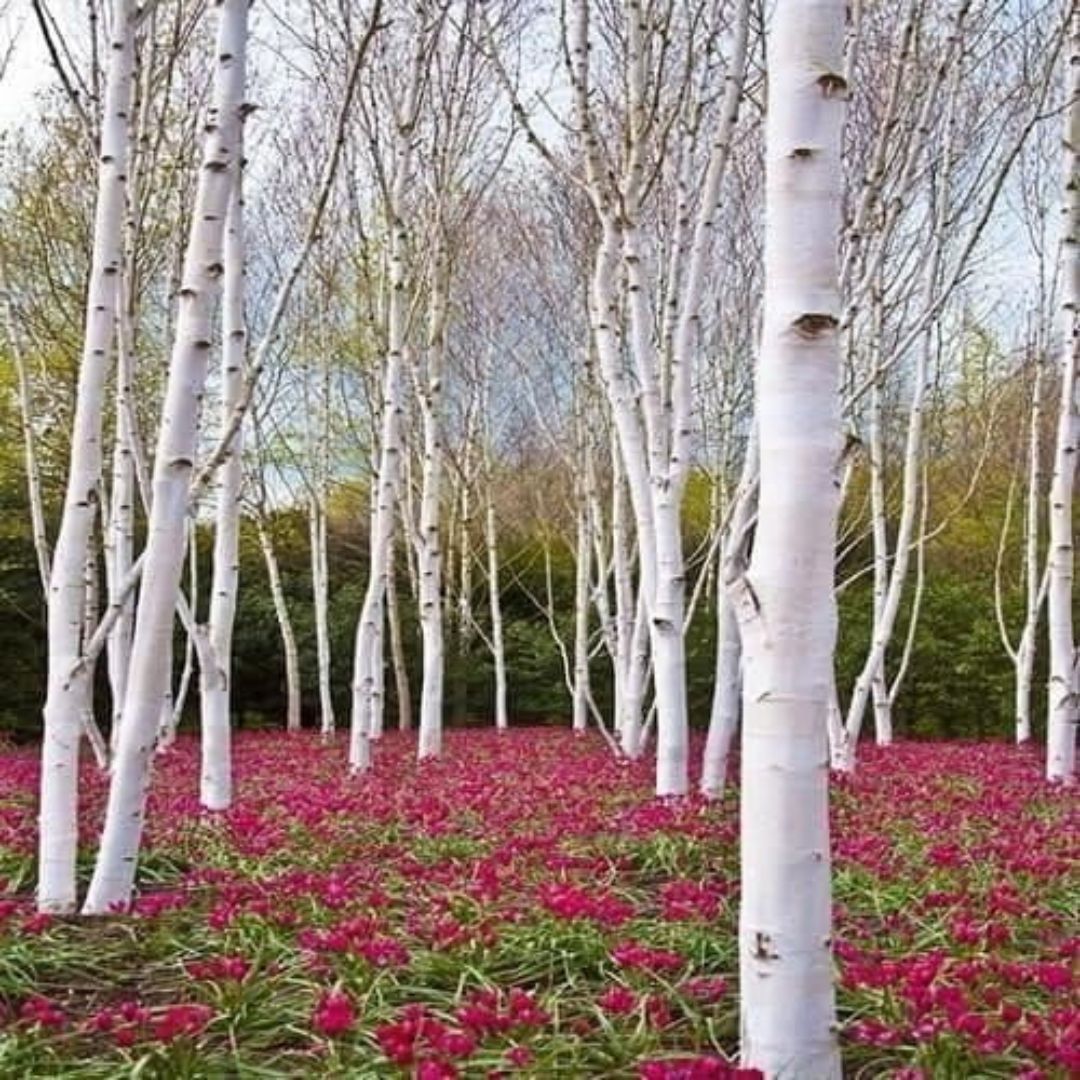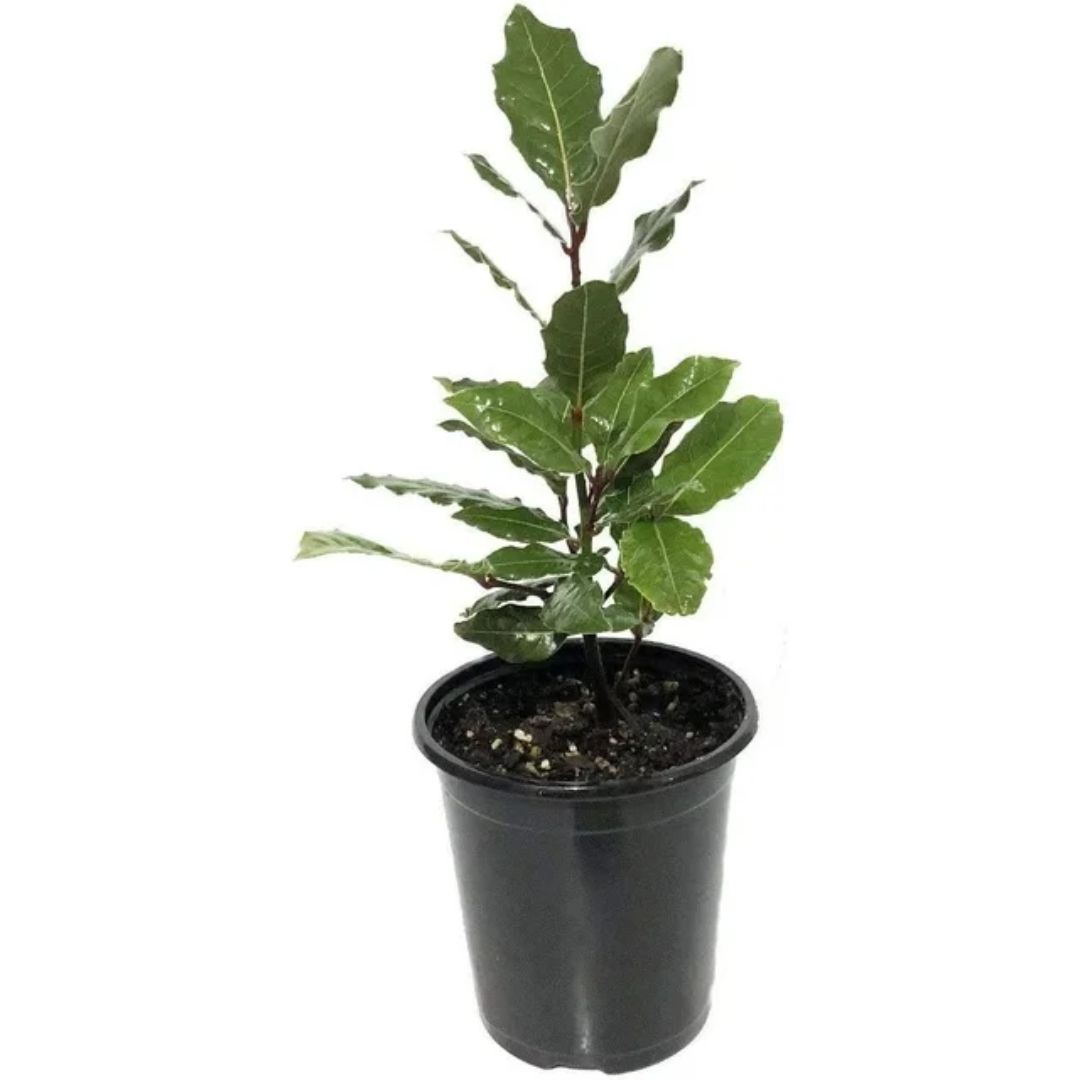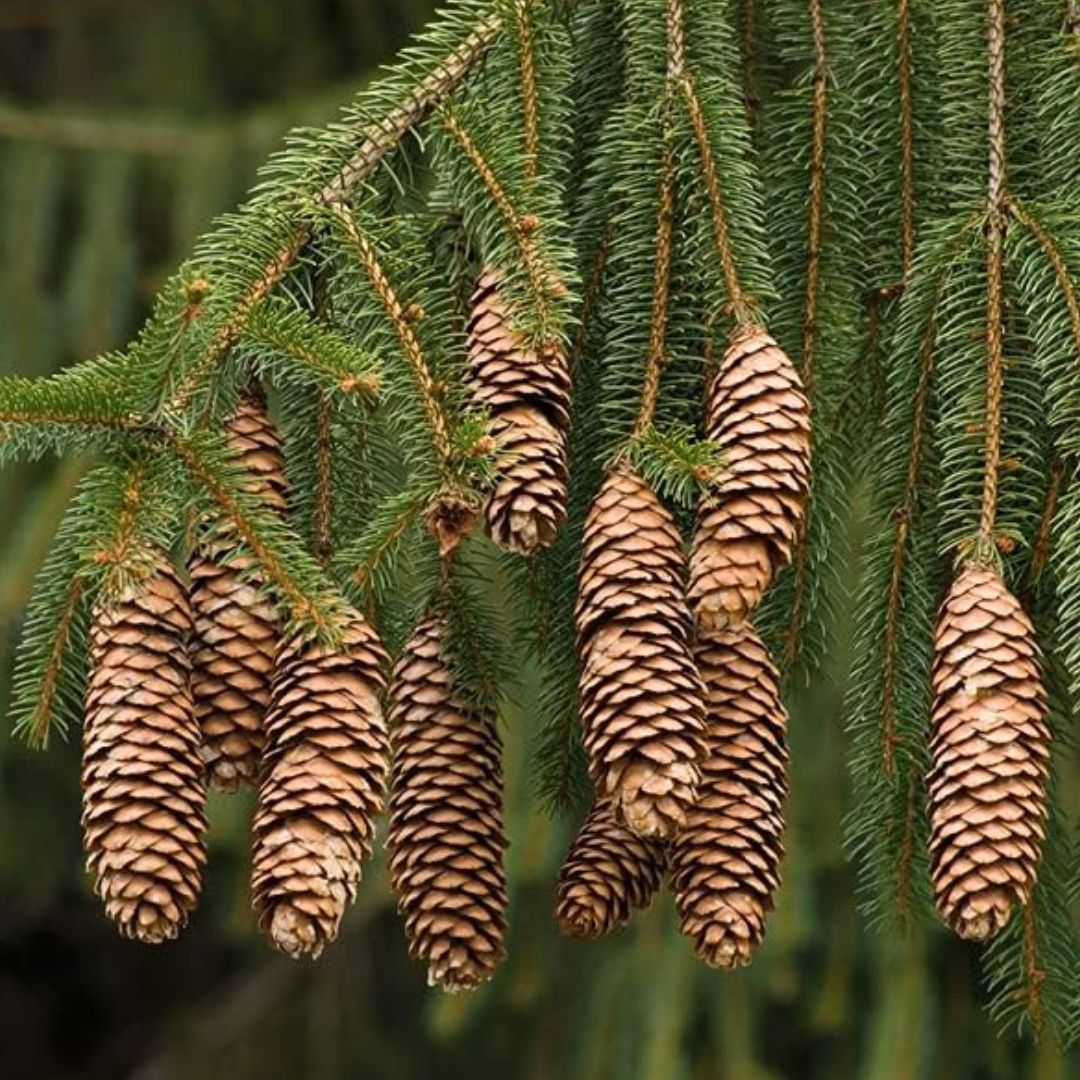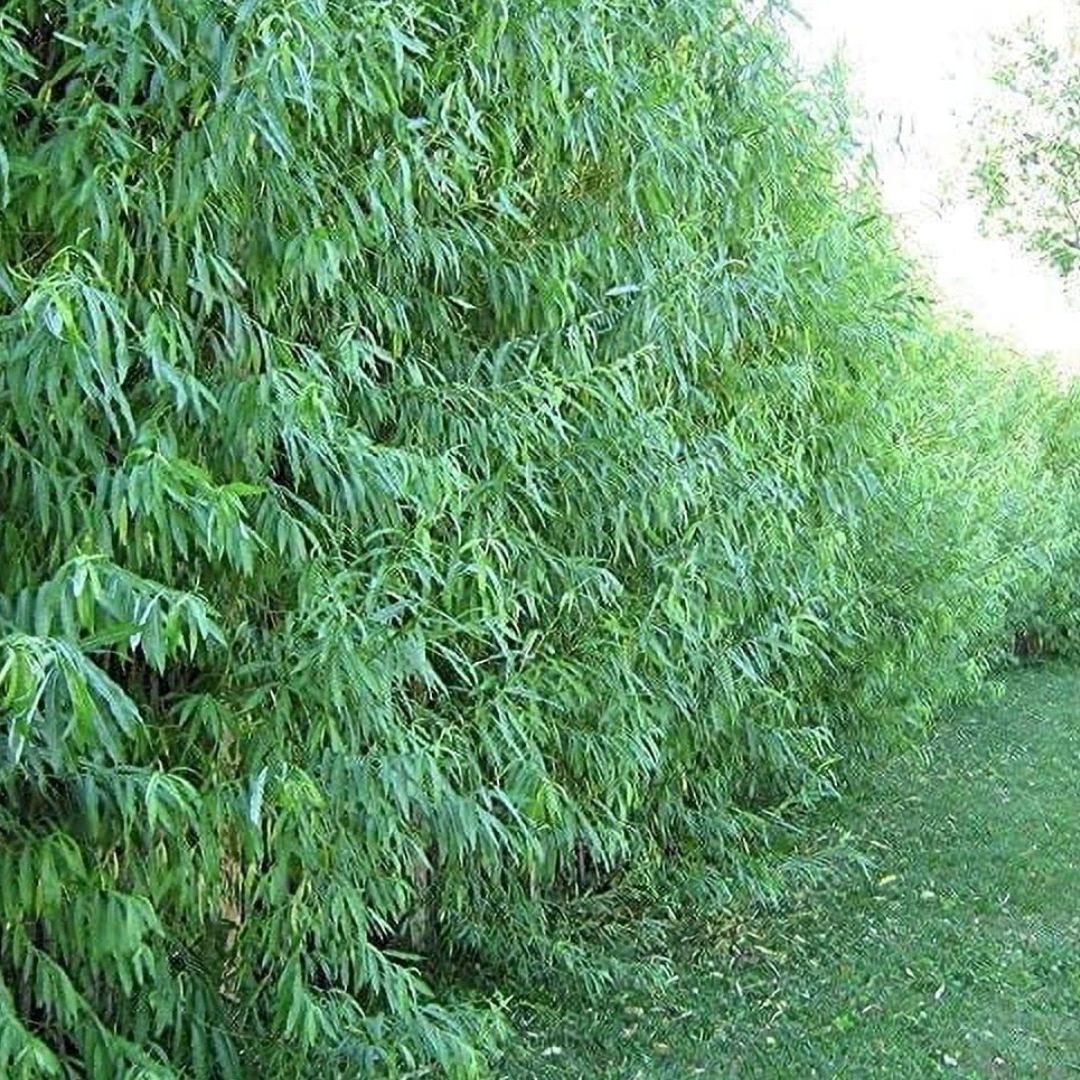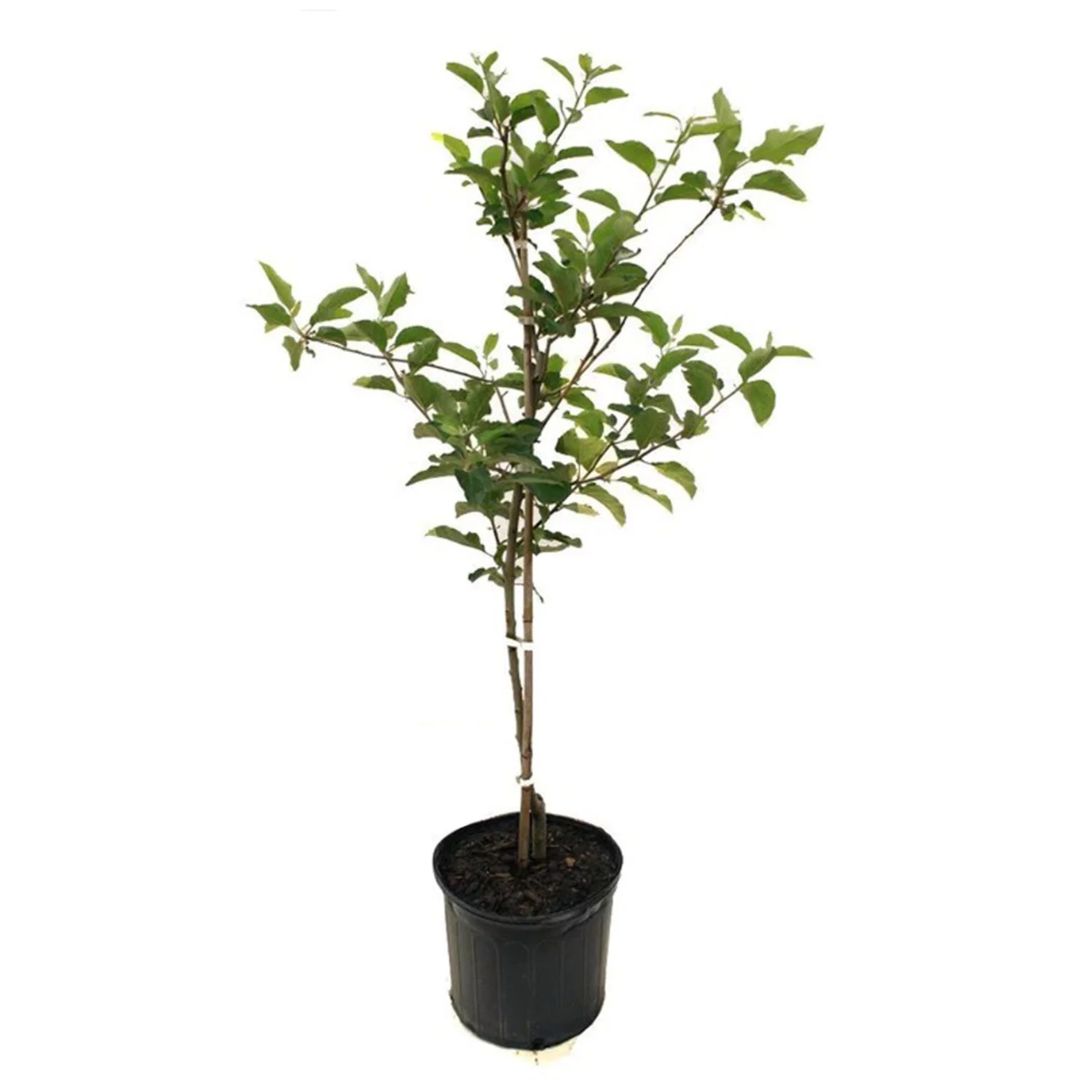5 Best Trees for a Wind Break — Protect Your Backyard With These Natural Defences
Slow down gusts and gales and prevent damage with these trees — Oh and the best part is, they're beautiful to gaze upon
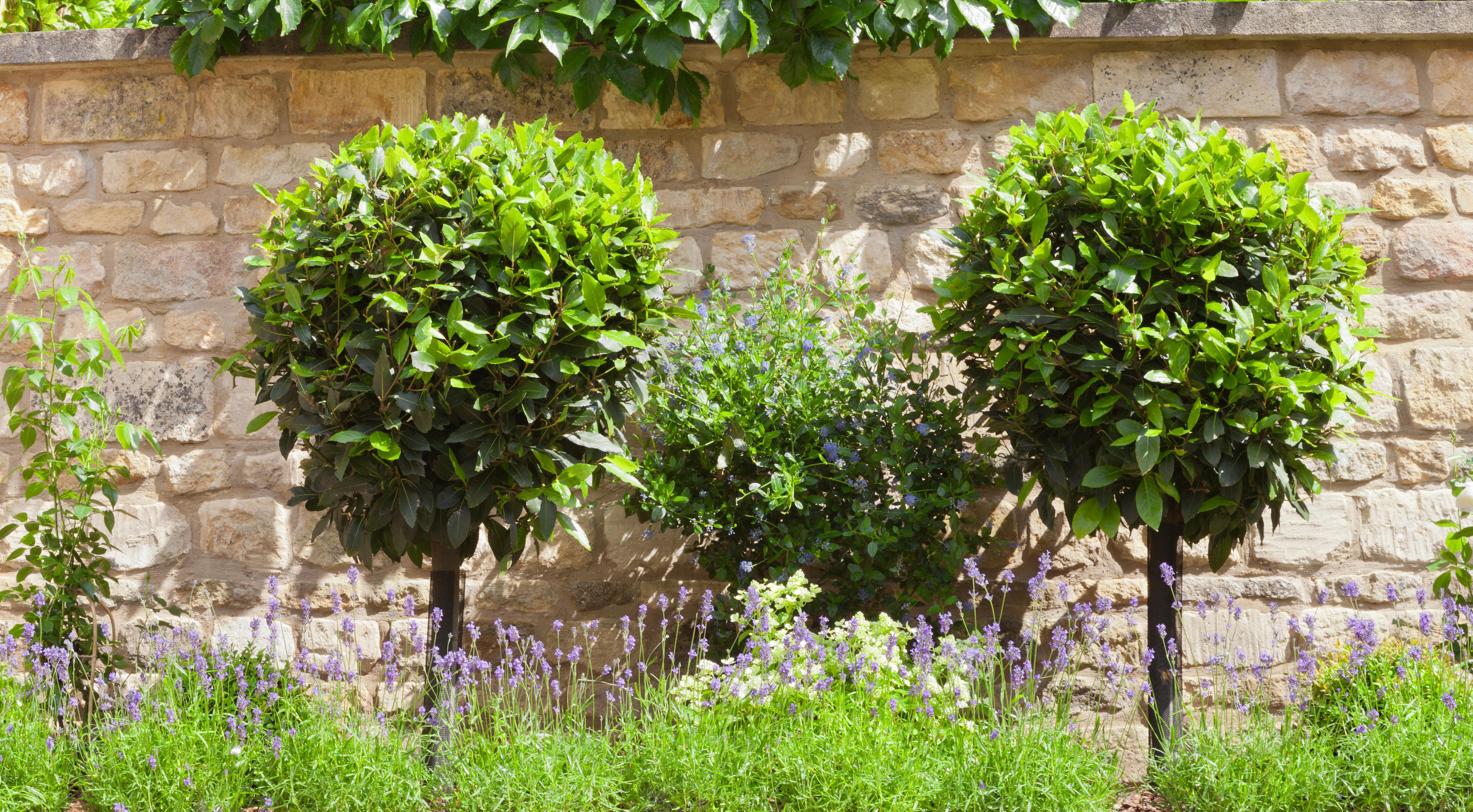
The benefits of having trees in your yard are enormous; from the purely practical, such as offering privacy, shade and protection from the elements, to their natural beauty. The best trees for a windbreak can help prevent storm damage to other plants and property-and even provide food and flavouring too.
'In contrast to a rigid structure such as a brick wall or a wood fence, a row of privacy trees allows strong winds to blow through it, reducing the strength and slowing it down,' says Kim Stoddart, co-author, The Climate Change Garden. 'There are so many reasons why trees are so much better as a wind break than a fence or wall. A solid structure can act as a sort of trampoline for wind, simply bouncing it off so it lands (and causes possible worse issues) elsewhere. Wind can have an extreme cooling impact on plants causing further stress and damage, alongside the actual on the the ground impact of the strong force. It's much better therefore to slow the flow and enable it to gently spread and dissipate, which is what happens when hedging or trees are used instead as a barrier.'
So, if you're looking for the best trees for privacy or simply want to spruce up and decorate your space — here is a selection of 5 best trees for a wind break that you can plant in your home.
Where is the best place to plant trees as a wind break?

'Get to know your garden and where the biggest threat from wind is likely to be,' says Kim. 'Trees are much more effective at naturally reducing the force of strong winds by thinning out the impact. They also have the benefit of soaking up water and helping to reduce the risk of flooding, all the while helping to boost biodiversity in your garden and creating a more resilient, wildlife-laden and enjoyable space in which to be.
'Trees and hedging can further create useful shading, help reduce noise pollution and improve air quality overall,' Kim adds.
Without further ado, here are a few trees you can plant in your garden to help with those strong wind forces.
1. Birch (Betula)

Birch trees — with their beautiful bark — make a great addition to a garden and are known to be one of the best fast-growing trees for privacy. Even when they drop their pretty leaves in winter, the bark continues to add interest to a yard. However, it's not just beauty and interest that birch trees offer, these deciduous beauties provide practical advantages too.
'There are various varieties of birch that can be grown for use as a windbreak,' says Kim Stoddart. 'These hardy, attractive trees are best planted in groups of at least three. They are a good pioneer species for open ground and will grow quickly to help afford protection against wind. Although they prefer at least a partially sunny spot, these trees will tolerate growing in most soils and like growing in clumps making them ideal as a barrier. They can also help boost natural pest control, as they make an attractive habitat for beneficial bugs.
'The idea of right plant, right place is ever true when it comes to deciding on the right trees to use for your windbreak,' continues Kim. 'First check how tall they will likely grow and consider whether hedging (such as laurel) might be a better option than taller trees, like birch. Also consider what other uses your windbreak might also provide. In the case of birch it is great for firewood, when properly dried.'
2. Laurel (Laurus nobilis)
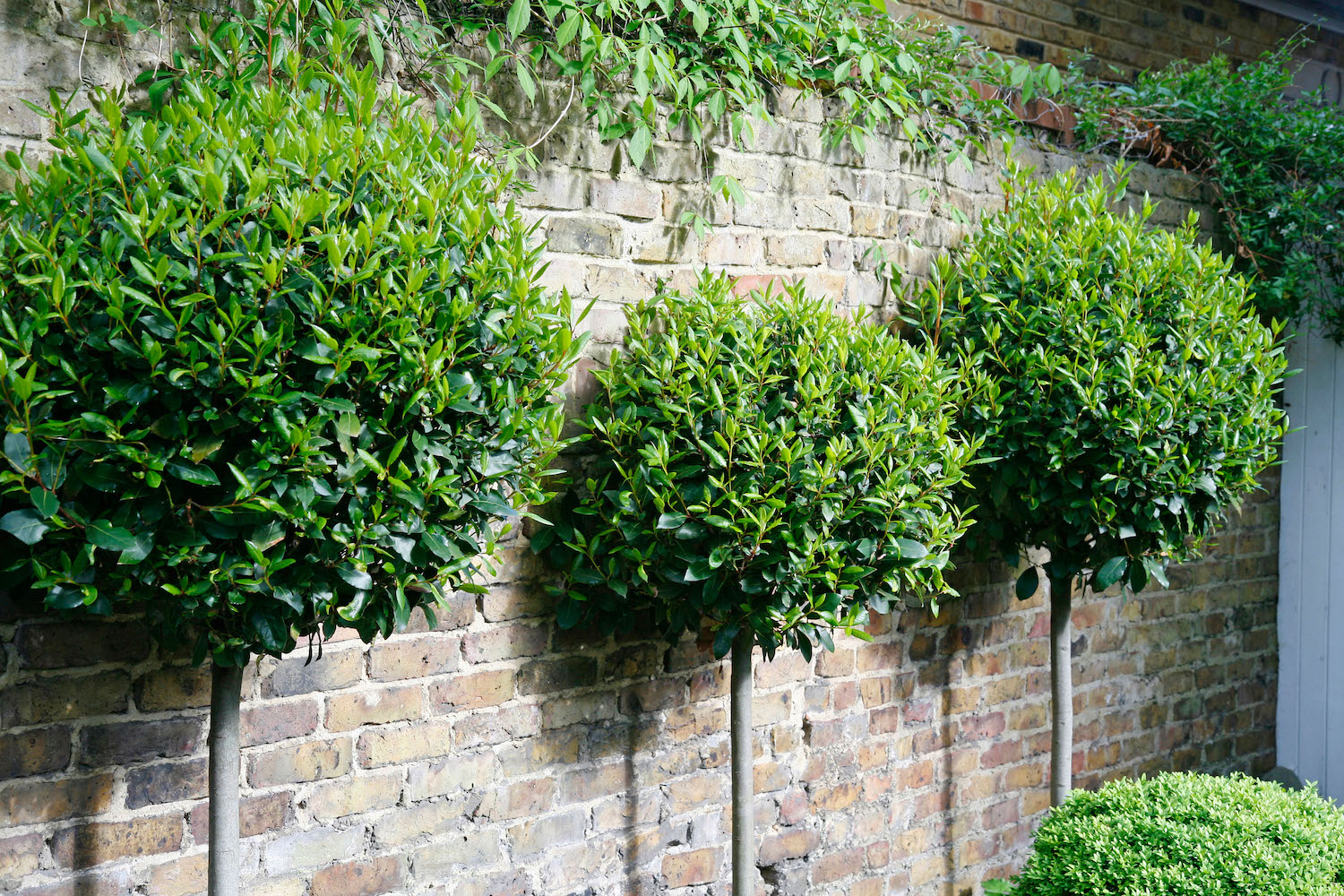
These bushy evergreen trees are loved for many reasons. From their attractive appearance and the easy way they grow in containers to the aromatic flavors the leaves add to cooked food, the bay tree (laurel) is a popular plant. Its foliage can also be easily composted.
'English laurel is a lovely evergreen, which can make an extremely fast-growing wind barrier - growing up to three feet a year in the right conditions,' says Kim. 'It likes full sun and partial shade and has a good heat resistance. Laurel can tolerate most types of soil - most types of everything in fact - as it is seriously tough and impervious to everything from smog, salt, sun, deer and poor soil. It is ideal for creating a hedge and barrier quickly and will cope especially well in USDA zones 6 to 9.'
3. Norway spruce (picea abies)
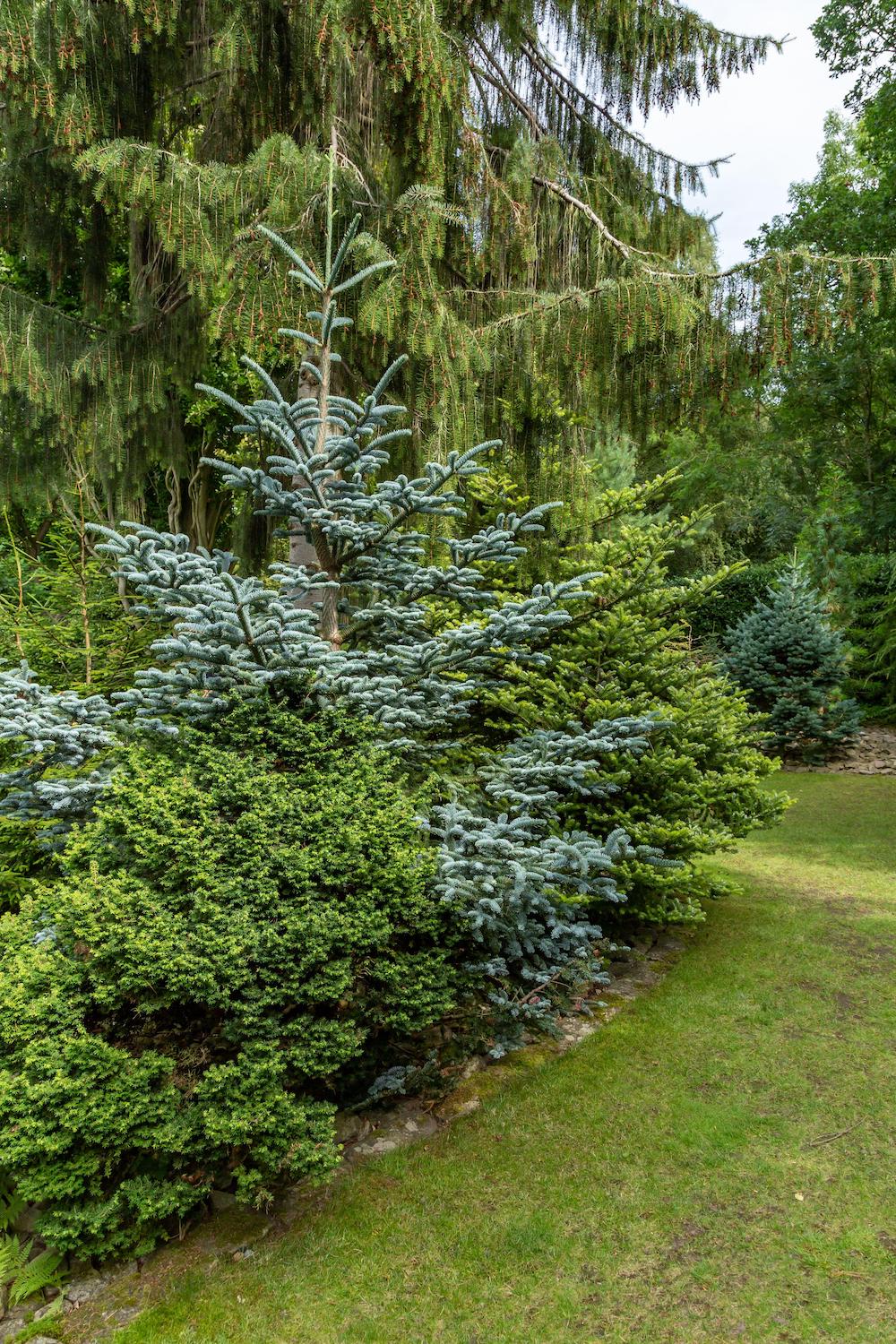
The Norway spruce is often commonly bought as a Christmas tree. However, as the name suggests, it's a cold tolerant species that can withstand harsh weather, and will provide year-round protection in your yard. So if you haven't already done so, consider buying a living tree and re-planting it after each holiday season.
'Norway spruce are fast-growers, ideal for creating a protective evergreen barrier in a larger garden,' says Kim. 'Do be aware they will grow tall, but their foliage creates a nice lower-down spread than other conifers.
'These trees work well in a larger garden, as they can grow up to 60 feet, with an (up to) thirty feet spread, so do bear that in mind when planting and leave around twenty feet distance apart. They are hardy in nature and should thrive across USDA zones 3 to 7. Norway spruce needles can also be used to make Ericaceous Compost, which is loved by blueberries.'
4. Willow
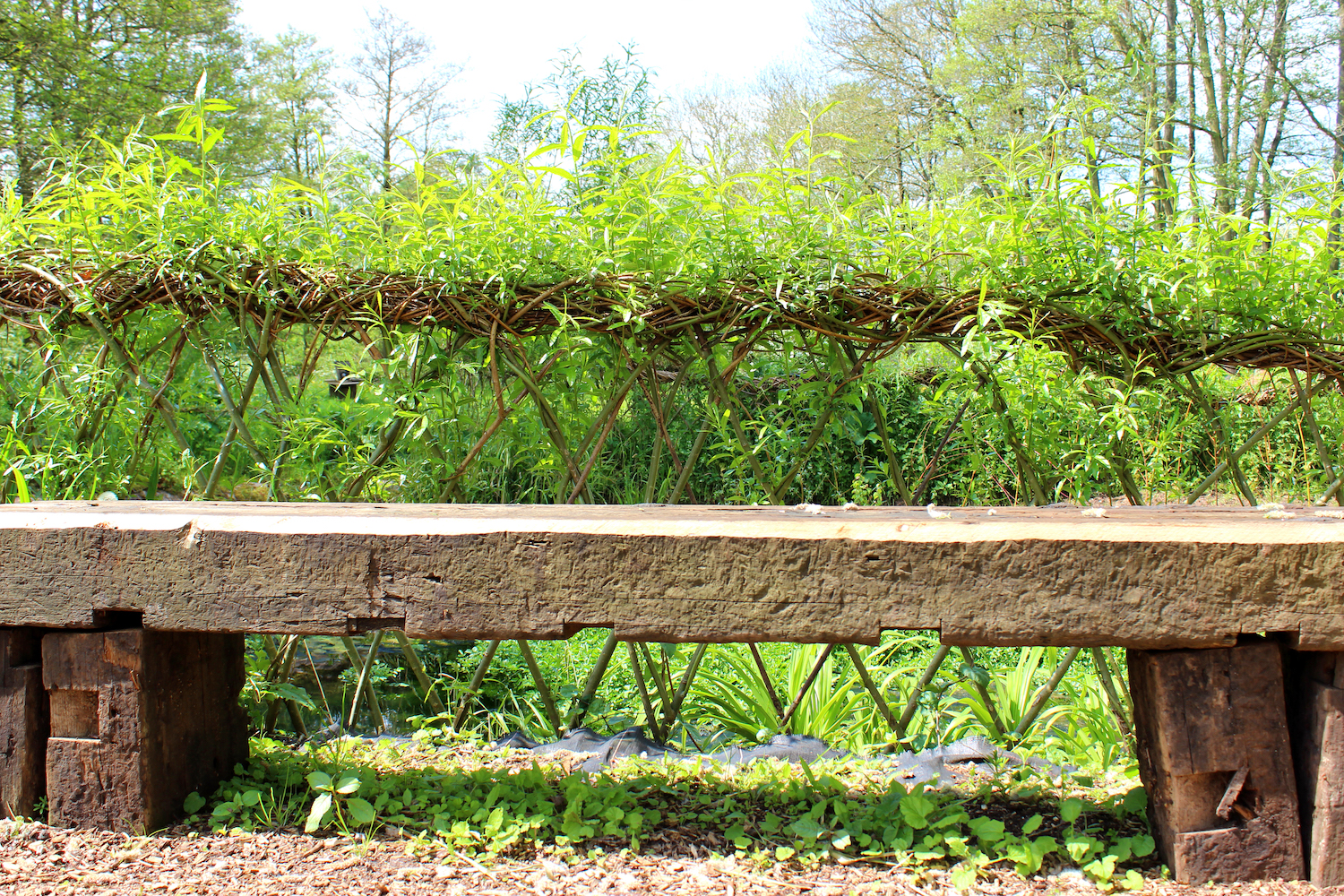
In The Climate Change Garden, Kim Stoddart, tells us her own garden lies in a very exposed location 650 feet above sea level. So for her westerly winds can be problematic.
To protect her garden, Kim has planted mixed trees at the back of the site, with a range of fruit trees to provide a further natural barrier in front. She has topped this off with fast-growing willow at the head of her vegetable garden.
'Layered planting is not only good while you're waiting for larger trees to grow,' it's useful anyway in a windbreak, as it can further slow the flow, and creates a more climate change savvy garden overall,' says Kim. 'Good options include willow and dogwood, which can create a fast-growing and attractive feature weaved in and around trees. This multi-layered defence ensures that the produce and plants in the central gardens are much better able to ride out storms.'
5. Fruit Trees

In addition to being an integral part of a food forest, planting fast-growing, easy fruit trees can be a fantastic way to create a windbreak to protect other plants and trees, as Kim Stoddart has done in her own garden.
'A row of fruit trees creates an attractive windbreak, and provides functional and edible protection,' says Kim. 'In my homestead it was the westerly wind that caused the biggest challenge to my ability to grow fruit trees such as apples. So I planted a row of fast-growing damson trees as a protective layer which after just a few years enabled my fledgling apples and pears to fully flourish.'
How close should I plant wind break trees together?
While it might be tempting to pack your windbreak trees in tightly to stop errant gusts disturbing your yard, this might cause problems for your trees as they mature. You want your trees to grow and fill these spaces, so planting them a sensible distance apart is still a good idea. It really depends on the trees you choose, but the closest rule of thumb we can find from the experts is 10 feet of distance between small trees, 20-30 for medium and larger trees.
Be The First To Know
The Livingetc newsletters are your inside source for what’s shaping interiors now - and what’s next. Discover trend forecasts, smart style ideas, and curated shopping inspiration that brings design to life. Subscribe today and stay ahead of the curve.
Jacky Parker is a London-based freelance journalist and content creator, specialising in interiors, travel and food. From buying guides and real home case studies to shopping and news pages, she produces a wide range of features for national magazines and SEO content for websites
A long-time contributor to Livingetc, as a member of the team, she regularly reports on the latest trends, speaking to experts and discovering the latest tips. Jacky has also written for other publications such as Homes and Gardens, Ideal Home, Red, Grand Designs, Sunday Times Style and AD, Country Homes and Interiors and ELLE Decoration.
-
 The 'New British' Style? This Victorian London Home Embraces Its Owners' Global Background
The 'New British' Style? This Victorian London Home Embraces Its Owners' Global BackgroundWarm timber details, confident color pops, and an uninterrupted connection to the garden are the hallmarks of this relaxed yet design-forward family home
By Emma J Page
-
 Muji Living Room Ideas — 5 Ways to Harness The Calming Qualities of This Japanese Design Style
Muji Living Room Ideas — 5 Ways to Harness The Calming Qualities of This Japanese Design StyleInspired by Japanese "zen" principles, Muji living rooms are all about cultivating a calming, tranquil space that nourishes the soul
By Lilith Hudson
